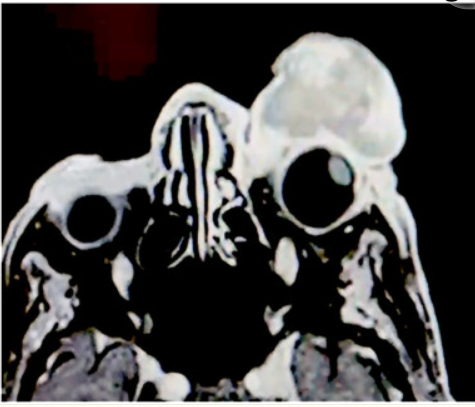
Two scientific posters presented at AAO 2019 highlighted findings from studies pertaining to geographic atrophy (GA) in different age-related macular degeneration (AMD) types.
The first was titled “Quantitative Fundus Autofluorescence Defines Two Phenotypes of GA Secondary to AMD.” The study authors measured levels of quantitative fundus autofluorescence (qAF) in GA lobules to determine any association with dominant predecessor intermediate AMD (iAMD) lesion type. The goal was to define two primary subtypes of GA secondary to AMD. The study included 66 regions of interest (ROIs; which included all atrophic lobules) of 31 eyes of 24 pseudophakic patients with GA secondary to AMD. ROIs were evaluated with mean qAF and spectral domain optical coherence tomography (SD-OCT). ROIs were stratified into two groups based on the lesion’s iAMD predecessor: soft drusen/pigment epithelial detachment or subretinal drusenoid deposits on SD-OCT. The two groups had significant differences in mean qAF (group 1: lower qAF, 37.0 ± 11.9 qAF units vs. group 2: higher qAF, 72.4 ± 12.3 qAF units; P<0.001; t test). The authors concluded that GA lesions can be stratified into two groups based on gAF and the predecessor-associated iAMD lesion. They suggested that using the qAF of GA may contribute to the overall pathogenesis of GA and help develop an individualized patient prognosis.
The second poster, “Geographic Atrophy in Patients Receiving Anti-VEGF Treatment for nAMD,” discussed the outcomes of a retrospective cohort study that compared GA growth in eyes with neovascular AMD (nAMD) treated with aflibercept, bevacizumab, and/or ranibizumab. The study took place from October 2006 through February 2019. Cirrus Advanced RPE Analysis software was used to identify GA, and SAS 9.4 was used to compute unpaired t tests, analysis of variance, and multiple regression. Final analysis included 197 eyes. Over a 24-month period, the average number of antivascular endothelial growth factor (anti-VEGF) injections received was 13. During the study, 22% of eyes developed new GA. The mean area of GA increased from 1.71 mm² to 2.93 mm²; growth rate was associated with hypertension, stroke, baseline best corrected visual acuity, baseline GA, and baseline drusen. At 24 months, eyes with 11 or more injections had significantly less GA area and growth rate. GA progression did not largely differ based on which anti-VEGF was used. The authors concluded, “Treating nAMD with aflibercept, bevacizumab, or ranibizumab demonstrated comparable GA development at 24 months. [The] number of injections inversely correlated with GA area and growth.”







 © 2025 Mashup Media, LLC, a Formedics Property. All Rights Reserved.
© 2025 Mashup Media, LLC, a Formedics Property. All Rights Reserved.